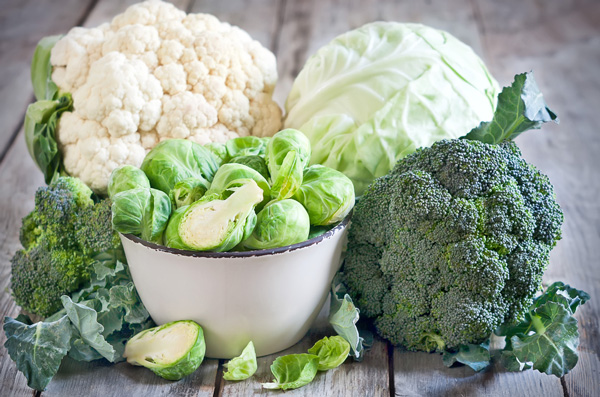Keto Foods & Cooking
Don’t I Need A Lot Of Nutrients From Vegetables?

The ketogenic diet can sometimes be a tad complex. On the whole, you need to fill up on fats with 75% of your daily calorie intake coming from fatty sources. 20% calories should come from protein and ultimately keep your carb intake low at under 5%.
It’s used to help manage and treat epilepsy, diabetes and other diseases.
Understanding the number of carbs in your greens are essential for controlling your carb intake.
A diet low in carbohydrates is an important component to boost physical and mental health.
High carb intake leads to obesity, type 2 diabetes, cognitive decline, insomnia, candida overgrowth, heart disease, adrenal fatigue, and compulsive overeating among many others.
People following a ketogenic diet need be much stricter when eating carbohydrates. Therefore, identifying fruits and veggies macronutrients is necessary for meal preparation.
What Vegetables To Eat For LCHF?
If you’re confused about what vegetables or other foods to eat on a keto diet, we’ve put together a list of over 30 popular vegetables with highlights of carb, fiber, and sugar content.
With this information, you can make an informed decision on what veggies to eat so you can proceed to ketosis with certainty.
Veggies are the core of a healthy diet. Eating your greens is something that 99% of people will agree is good for you.
By the end of this, you’ll have a better understanding of what vegetables to avoid and buy on your next shopping trip.
Ketogenic Veggies Chart Sorted by Sugar Grams
Eating sugar produces sharp insulin spikes, and generally, you must avoid fruits and vegetables that are high in sugar.
Except for avocado, coconut, and olives, fruits are pretty much forbidden.
There are exceptions, and I often eat berries of all kinds with a touch of heavy cream to negate the insulin spike.
With veggies potatoes and sweet potatoes are completely off limits.
My worst culprits are carrots, onions, tomatoes, and parsnips. These are high carb, and most people will say to avoid them altogether.
I have no issues eating them since I can control carb cravings and don’t have any need to delve into processed or junk foods.
Some of the best choices for low sugar content is spinach (0.1g sugar carbs per cup), lettuce 0.3g, Pak choi 0.8g, and one of my personal favorites asparagus with 1.2g from sugar.
High sugars choices to keep an eye on is sweet potatoes 13g sugar per cup, beets 9.2g, parsnips 7.7g, and onions 6.8g.
Maybe enjoy the higher carb foods once a week or so or after working out.
Below is a list of low carb veggies sorted by grams of sugar. If you’re a beginner, it’s best not to restrict yourself too much but always to be mindful of watching sugar intake.
Ketogenic Veggies Chart Sorted by Net Carbs Grams
You can eat many different vegetables on a keto diet. Following this high-fat meal plan requires you to eat high amounts of vegetables, moderate meats and fish.
The issue is all carbs, proteins, and fats and isn’t alike, and there are vegetables much higher in carbs than others.
The net carbs for a cup of sweet potatoes are a staggering 34.8g.
This is calculated by subtracting dietary fiber which in this case is 6.6g by total carbs 41.4g. Sweet potatoes, therefore, spike your insulin levels considerably, and you should look to avoid it on keto.
Sugary and starchy vegetables do have a place. Fitting them into your daily healthy habits and macronutrients is another thing.
Foods such as carrots, tomatoes, and garlic are fantastic sources of vitamins, minerals, and antioxidants but you would usually consume a whole bunch with your meal.
Adding a garlic clove or a few chopped tomatoes will help flavor recipes and keep you on the keto path.
Some of the best choices for controlling net carbs are spinach with 0.4g net carbs per cup, celery 1.9g, and arugula 1.2g.
Although foods like garlic have a massive 42.1g per cup and ginger 15.2g, chances are you’re not eating a whole cup but only a small quantity.
Even onions at 12.2g can fit into your daily macros since you might only use half a chopped onion on salads for example.
Eating in moderation is key and consuming any vegetables if it fits into your macros are beneficial for improving health and well-being.
You want to make it as easy as possible to enjoy your diet. Limiting a vast amount of foods can put you on a path of snacking on processed foods if not careful.
Below is a low carb food chart sorted by net carbs. Your goal is to keep net carbs low on a high-fat diet.
But anywhere between 20g-100g is acceptable depending on your type of diet, personal goals, and whether or not you exercise.
Conclusion
To avoid starchy foods, it’s good to substitute with alternative keto foods.
For example, if you like rice or potatoes try transforming some cauliflower into cauliflower rice. You can even use it to make pizza and other keto recipes.
Regular white or brown bread, try baking some almond or coconut flour based bread to lower the carbs. It has similar taste and texture just without the sugars.
If you are attempting to lose weight, you should eat foods on the lower end of net carbs to your eating habits.
Look to avoid high starch foods such as potatoes, rice, and pasta.
If you are just beginning a high-fat diet, then keep things easy and manageable. Avoid the high carb choices and learn to include healthy fats while you savor ketosis.




